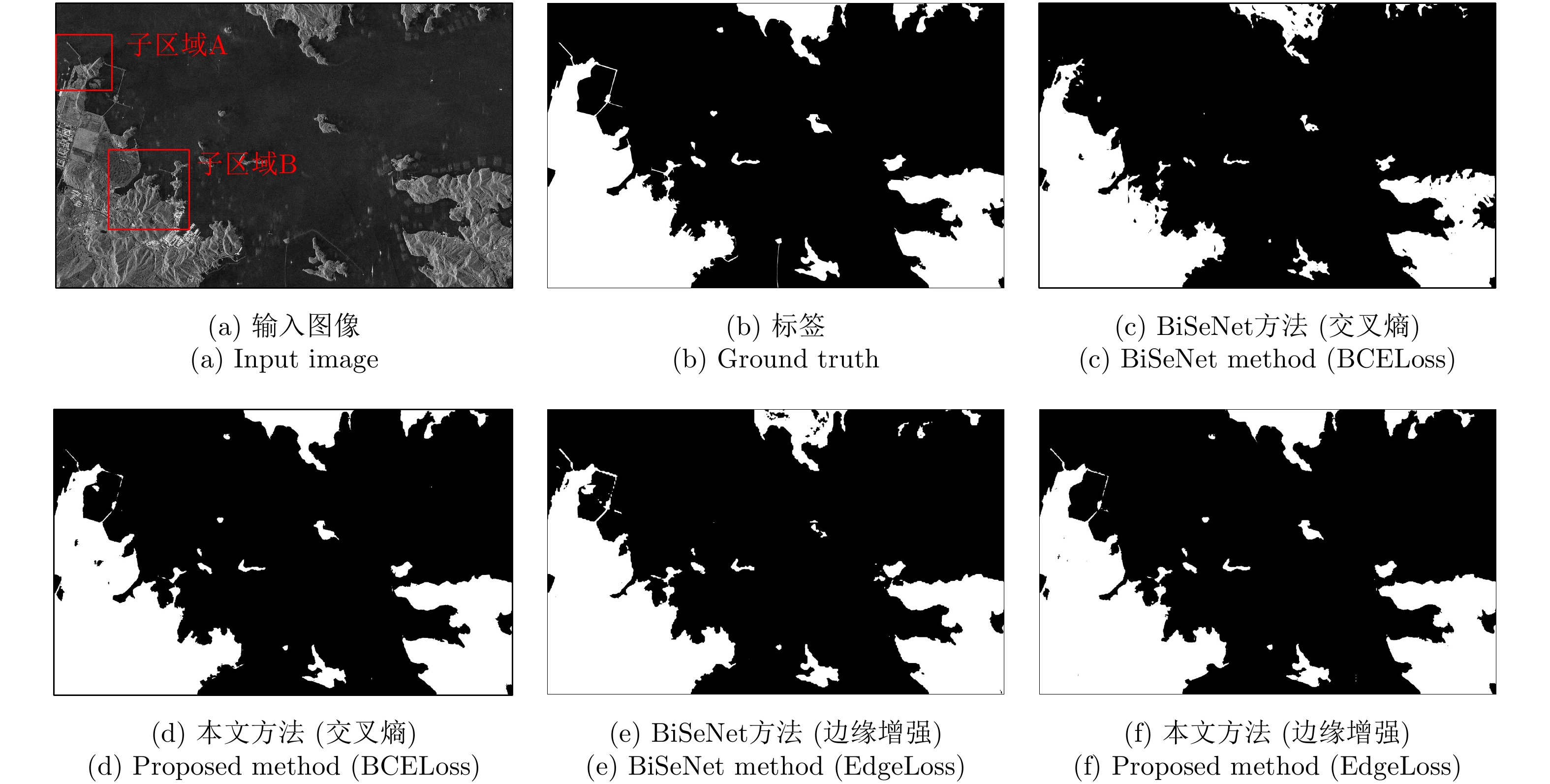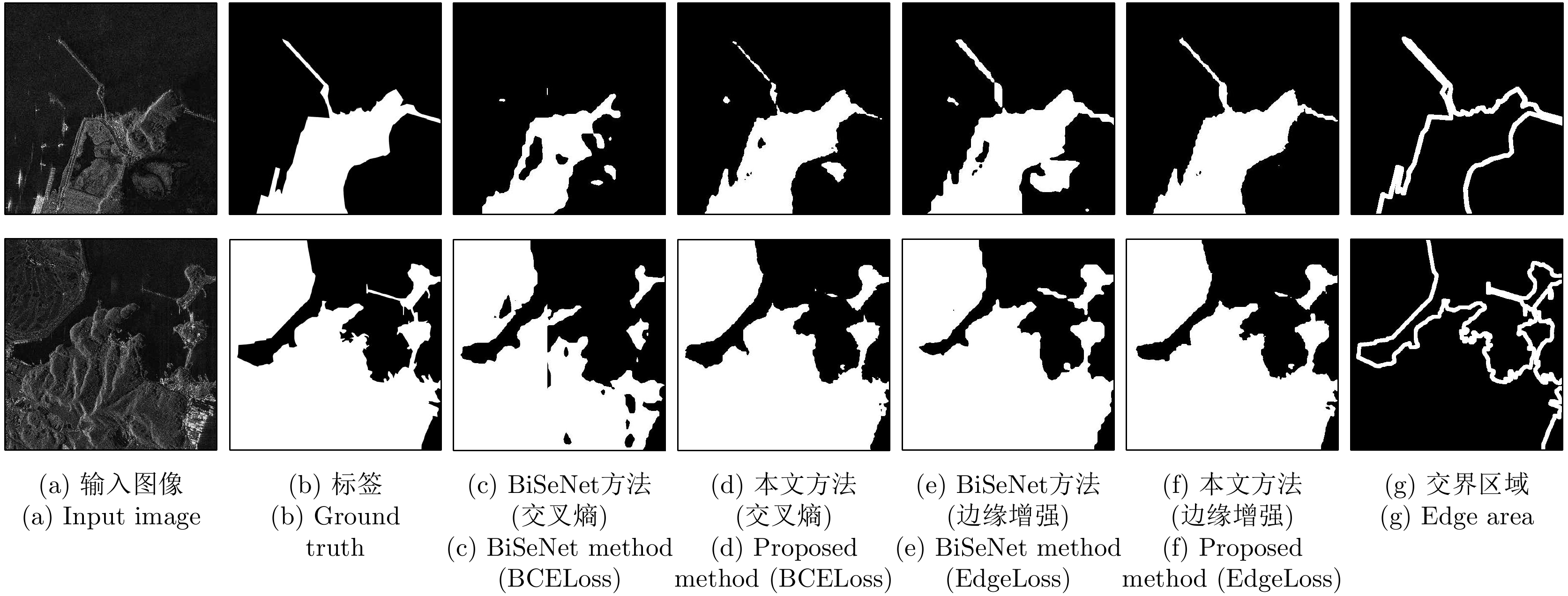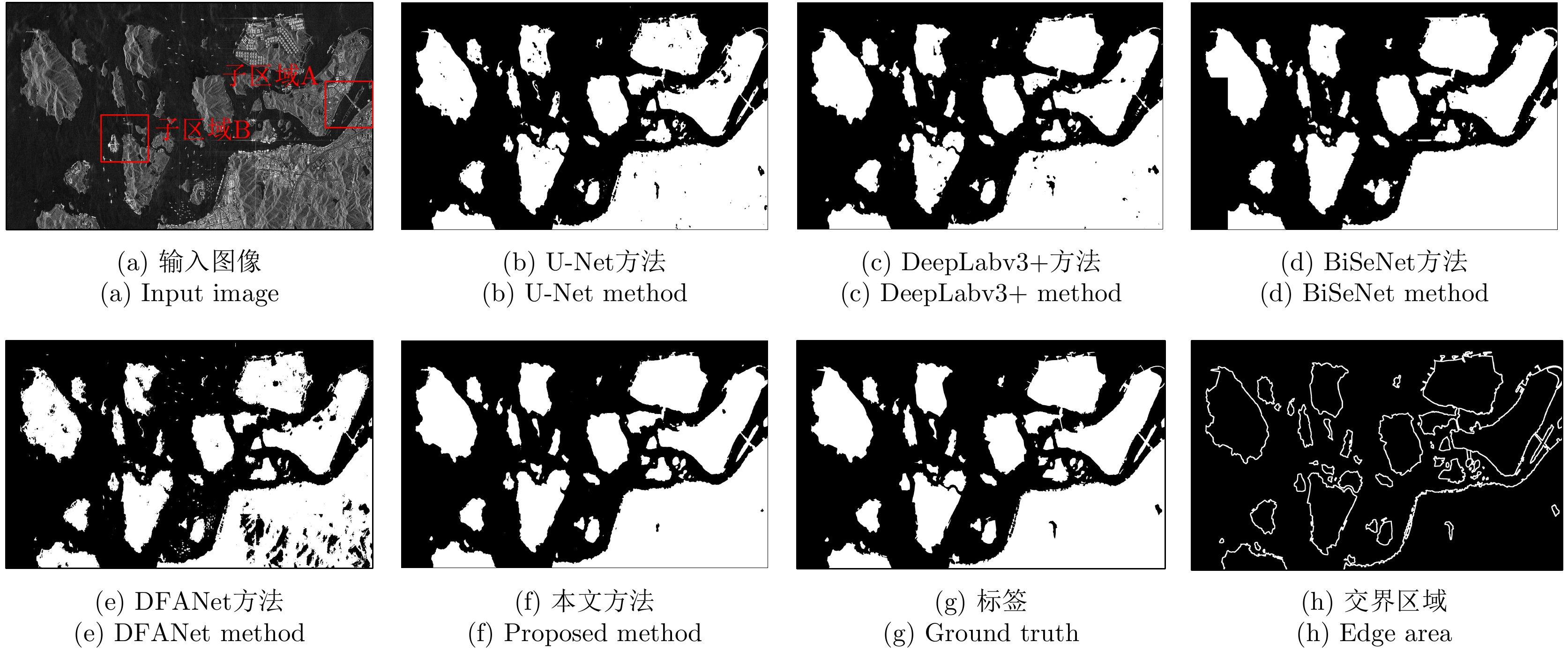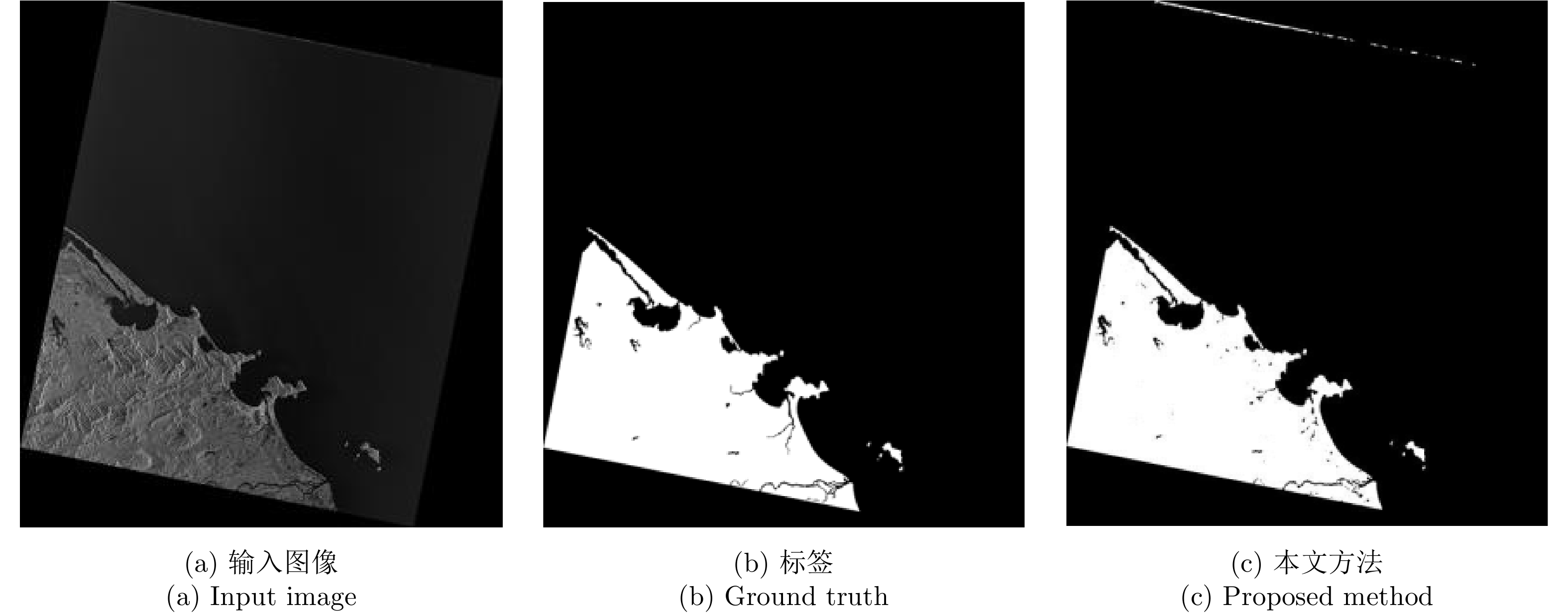| [1] |
邢相薇, 计科峰, 康利鸿, 等. HRWS SAR图像舰船目标监视技术研究综述[J]. 雷达学报, 2015, 4(1): 107–121. doi: 10.12000/JR14144XING Xiangwei, JI Kefeng, KANG Lihong, et al. Review of ship surveillance technologies based on high-resolution wide-swath synthetic aperture radar imaging[J]. Journal of Radars, 2015, 4(1): 107–121. doi: 10.12000/JR14144 |
| [2] |
周明, 马亮, 王宁, 等. 面向海面目标检测的陆海分离和海面分区算法研究[J]. 雷达学报, 2019, 8(3): 366–372. doi: 10.12000/JR19036ZHOU Ming, MA Liang, WANG Ning, et al. Land-sea separation and sea surface zoning algorithms for sea surface target[J]. Journal of Radars, 2019, 8(3): 366–372. doi: 10.12000/JR19036 |
| [3] |
LI Zhi, QU Changwen, ZHOU Qiang, et al. A sea-land segmentation algorithm of SAR image based on the SLIC superpixel division[J]. Radar Science and Technology, 2017, 15(4): 354–358. doi: 10.3969/j.issn.1672-2337.2017.04.003 |
| [4] |
AN Chengjin, NIU Zhaodong, LI Zhijun, et al. Otsu threshold comparison and SAR water segmentation result analysis[J]. Journal of Electronics & Information Technology, 2010, 32(9): 2215–2219. doi: 10.3724/SP.J.1146.2009.01426 |
| [5] |
OTSU N. A threshold selection method from gray-level histograms[J]. IEEE Transactions on Systems, Man, and Cybernetics, 1979, 9(1): 62–66. doi: 10.1109/TSMC.1979.4310076 |
| [6] |
LIU Chun, YANG Jian, YIN Junjun, et al. Coastline detection in SAR images using a hierarchical level set segmentation[J]. IEEE Journal of Selected Topics in Applied Earth Observations and Remote Sensing, 2016, 9(11): 4908–4920. doi: 10.1109/jstars.2016.2613279 |
| [7] |
HOU Biao, HU Yuhui, and JIAO Licheng. Improved shearlet edge detection for waters of SAR images[J]. Journal of Image and Graphics, 2010, 15(10): 1549–1554. doi: 10.11834/jig.20101019 |
| [8] |
LIU Zhongling, LI Fei, LI Ning, et al. A novel region-merging approach for coastline extraction from sentinel-1A IW mode SAR imagery[J]. IEEE Geoscience and Remote Sensing Letters, 2016, 13(3): 324–328. doi: 10.1109/LGRS.2015.2510745 |
| [9] |
黄祥李, 张杰, 计科峰, 等. 基于GSHHG数据库与改进CV模型的SAR图像海陆分割算法[C]. 第五届高分辨率对地观测学术年会论文集, 西安, 中国, 2018, 877–892.
HUANG Xiangli, ZHANG Jie, JI Kefeng, et al. Sea-land segmentation algorithm of SAR image based on GSHHG database and improved CV model[C]. The 5th China High Resolution Earth Observation Conference, Xi’an, China, 2018, 877–892.
|
| [10] |
SHELHAMER E, LONG J, and DARRELL T. Fully convolutional networks for semantic segmentation[J]. IEEE Transactions on Pattern Analysis and Machine Intelligence, 2017, 39(4): 640–651. doi: 10.1109/TPAMI.2016.2572683 |
| [11] |
RONNEBERGER O, FISCHER P, and BROX T. U-Net: Convolutional networks for biomedical image segmentation[C]. The 18th International Conference on Medical Image Computing and Computer-assisted Intervention, Munich, Germany, 2015: 234–241. doi: 10.1007/978-3-319-24574-4_28. |
| [12] |
BADRINARAYANAN V, KENDALL A, and CIPOLLA R. SegNet: A deep convolutional encoder-decoder architecture for image segmentation[J]. IEEE Transactions on Pattern Analysis and Machine Intelligence, 2017, 39(12): 2481–2495. doi: 10.1109/TPAMI.2016.2644615 |
| [13] |
CHEN L C, PAPANDREOU G, KOKKINOS I, et al. DeepLab: Semantic image segmentation with deep convolutional nets, atrous convolution, and fully connected CRFs[J]. IEEE Transactions on Pattern Analysis and Machine Intelligence, 2018, 40(4): 834–848. doi: 10.1109/TPAMI.2017.2699184 |
| [14] |
ZHAO Hengshuang, SHI Jianping, QI Xiaojuan, et al. Pyramid scene parsing network[C]. 2017 IEEE Conference on Computer Vision and Pattern Recognition, Honolulu, USA, 2017: 6230–6239. doi: 10.1109/CVPR.2017.660. |
| [15] |
李宁, 牛世林. 基于局部超分辨重建的高精度SAR图像水域分割方法[J]. 雷达学报, 2020, 9(1): 174–184. doi: 10.12000/JR19096LI Ning and NIU Shilin. High-precision water segmentation from synthetic aperture radar images based on local super-resolution restoration technology[J]. Journal of Radars, 2020, 9(1): 174–184. doi: 10.12000/JR19096 |
| [16] |
SHAMSOLMOALI P, ZAREAPOOR M, WANG Ruili, et al. A novel deep structure U-Net for sea-land segmentation in remote sensing images[J]. IEEE Journal of Selected Topics in Applied Earth Observations and Remote Sensing, 2019, 12(9): 3219–3232. doi: 10.1109/JSTARS.2019.2925841 |
| [17] |
LI Ruirui, LIU Wenjie, YANG Lei, et al. DeepUNet: A deep fully convolutional network for pixel-level sea-land segmentation[J]. IEEE Journal of Selected Topics in Applied Earth Observations and Remote Sensing, 2018, 11(11): 3954–3962. doi: 10.1109/JSTARS.2018.2833382 |
| [18] |
张金松, 邢孟道, 孙光才. 一种基于密集深度分离卷积的SAR图像水域分割算法[J]. 雷达学报, 2019, 8(3): 400–412. doi: 10.12000/JR19008ZHANG Jinsong, XING Mengdao, and SUN Guangcai. A water segmentation algorithm for SAR image based on dense depthwise separable convolution[J]. Journal of Radars, 2019, 8(3): 400–412. doi: 10.12000/JR19008 |
| [19] |
YU Changqian, WANG Jingbo, PENG Chao, et al. BiSeNet: Bilateral segmentation network for real-time semantic segmentation[C]. The 15th European Conference on Computer Vision, Munich, Germany, 2018: 334–349. doi: 10.1007/978-3-030-01261-8_20. |
| [20] |
ZHANG Qingjun. System design and key technologies of the GF-3 satellite[J]. Acta Geodaetica et Cartographica Sinica, 2017, 46(3): 269–277. doi: 10.11947/j.AGCS.2017.20170049 |
| [21] |
LI Hanchao, XIONG Pengfei, FAN Haoqiang, et et al. DFANet: Deep feature aggregation for real-time semantic segmentation[C]. 2019 IEEE/CVF Conference on Computer Vision and Pattern Recognition, Long Beach, USA, 2019: 9514–9523. doi: 10.1109/CVPR.2019.00975. |
| [22] |
ZHANG Tongtong, DONG Junyu, ZHAO Haoran, et al. Lightweight phytoplankton detection network based on knowledge distillation[J]. Journal of Applied Sciences, 2020, 38(3): 367–376. doi: 10.3969/j.issn.0255-8297.2020.03.003 |




 Submit Manuscript
Submit Manuscript Peer Review
Peer Review Editor Work
Editor Work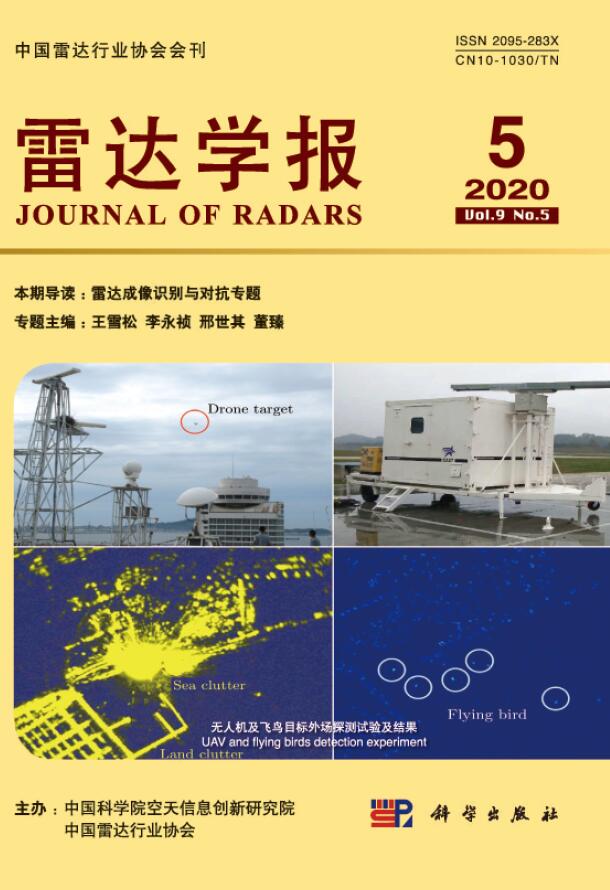

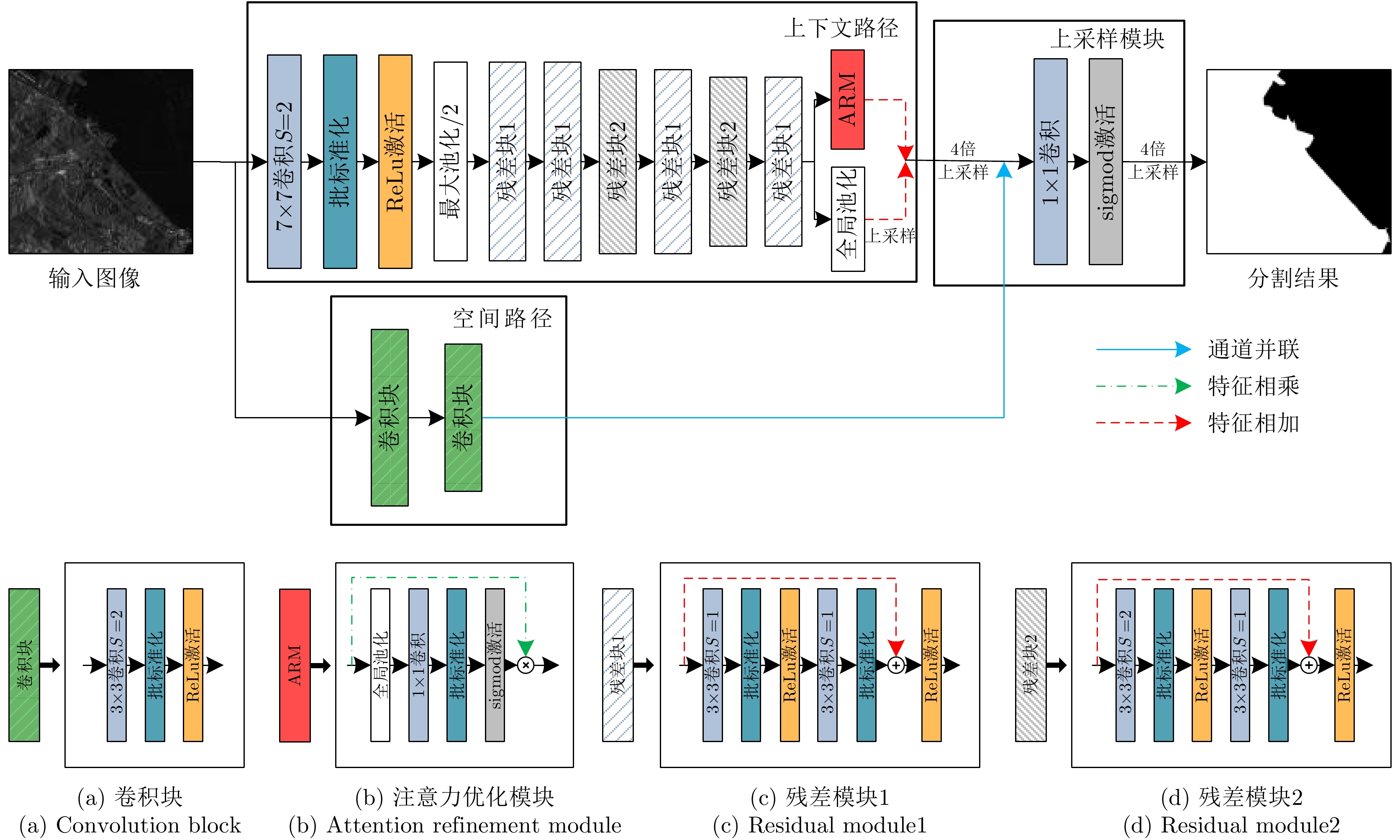



 DownLoad:
DownLoad:

